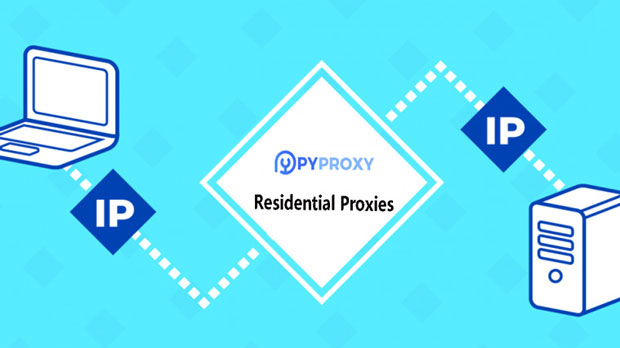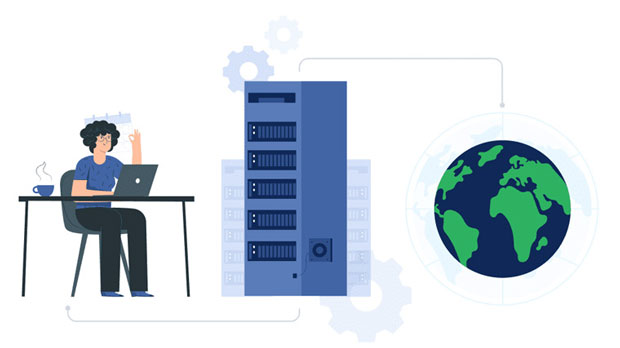In the ever-evolving landscape of internet browsing, the need for efficient and secure proxies has never been greater. Among various proxy management tools, PYPROXY and Proxyscrape stand out due to their functionality and adaptability in different environments. This article delves into an in-depth comparison of these two tools, particularly focusing on their performance in wireless and wired proxy settings. By examining their unique features, benefits, and limitations, users can gain a clearer understanding of which tool best fits their specific needs, offering practical insights that provide real value. Understanding the Importance of Proxy Tools in Different EnvironmentsBefore diving into a comparative analysis, it's crucial to understand why proxy tools are essential in both wireless and wired environments. A proxy server acts as an intermediary between a user and the internet, offering privacy, security, and sometimes even better performance by caching data. In a wireless environment, proxies help to mask users’ IP addresses, ensuring security while on public or shared networks. On the other hand, wired environments often demand more stable, high-speed connections, and proxies can help enhance network performance and ensure anonymity during data transmission.Overview of PyProxy and ProxyscrapePyProxy and Proxyscrape both offer robust solutions for handling proxies but are tailored to meet different needs.PyProxy is an open-source tool that simplifies proxy handling through Python scripting. It allows users to manage proxies in an automated manner, making it ideal for tasks requiring high frequency or large volumes of proxy requests. The integration with Python gives users flexibility, especially for developers or businesses that need custom automation.Proxyscrape, on the other hand, is a service that provides a vast database of free and paid proxies, with easy-to-use filtering options for selecting proxies based on location, speed, and anonymity level. Proxyscrape targets both individual users and businesses looking for a straightforward way to find reliable proxies.Performance in Wireless Proxy EnvironmentsIn a wireless environment, where network stability can vary and security risks are heightened, both tools have their unique advantages.PyProxy stands out due to its flexibility in automating proxy rotations. This is particularly useful in wireless environments where IP addresses may be exposed to tracking or attacks. Users can write custom scripts to rotate proxies at set intervals, preventing exposure and enhancing security. Additionally, the Python integration allows easy configuration, even for users who are less familiar with coding.However, PyProxy's dependency on local hardware and software configurations could be a limiting factor in some wireless settings. In environments with intermittent connectivity or weak signals, PyProxy might require regular adjustments or fine-tuning.On the other hand, Proxyscrape offers a vast pool of proxies, ensuring that users can find the right ones suited for wireless use, where reliability is key. Proxyscrape’s proxy lists are continuously updated, offering access to fresh proxies that are less likely to be flagged or blocked. This makes Proxyscrape an excellent choice for users who need consistent and reliable proxy performance without the hassle of custom scripting.However, Proxyscrape's reliance on third-party proxies can sometimes lead to slower speeds or blocked IPs, especially in environments with high demand or oversaturated proxy pools. Users may need to check proxy quality regularly to avoid issues like downtime or poor performance.Performance in Wired Proxy EnvironmentsIn a wired environment, where the primary concerns are speed, stability, and security, both tools perform well but cater to different requirements.PyProxy shines in wired environments due to its ability to handle large volumes of proxy requests seamlessly. For businesses or individuals requiring stable, fast connections for tasks like web scraping or data analysis, PyProxy offers the advantage of customizability and automation. Its Python integration means users can design advanced workflows that rotate proxies in response to specific conditions, ensuring continuous operation without manual intervention.Moreover, PyProxy can be configured to handle multiple proxy sources, allowing for load balancing in high-demand environments. This ensures that users can maintain stable and secure connections even during peak usage periods.Proxyscrape, while offering a less hands-on approach compared to PyProxy, is ideal for users who need quick access to high-quality proxies. Proxyscrape’s ability to filter proxies based on speed and reliability makes it a solid choice for wired environments where the priority is fast, uninterrupted service. The platform's premium proxies are especially beneficial for users in wired settings who require high-speed connections for streaming, gaming, or other bandwidth-intensive tasks.One of the main advantages of Proxyscrape in wired environments is its ease of use. Users don’t need to worry about setting up complex configurations or writing scripts. The pre-configured lists ensure that proxies are immediately available for use, making it a good option for individuals or businesses that need a straightforward solution without extra setup.Security Features ComparisonSecurity is an essential consideration in any proxy tool. Both PyProxy and Proxyscrape offer solid security features, but their approaches differ.PyProxy provides users with more control over their security measures. Since it relies on custom Python scripts, users can set up advanced security protocols such as rotating proxies after every request, adding encryption layers, or implementing rate-limiting to prevent detection. This flexibility is ideal for users who need to handle sensitive tasks like web scraping or anonymous browsing securely.Proxyscrape, although not as customizable, provides proxies with varying levels of anonymity, including high-anonymity proxies that don’t leak identifying information. For users who are less technically inclined and want a solution that’s easy to use, Proxyscrape’s built-in security features such as IP masking and access to high-anonymity proxies make it a viable choice.However, it’s worth noting that since Proxyscrape is a third-party service, users are somewhat reliant on the service provider’s security measures. While the platform ensures that proxies meet certain security standards, the lack of direct control may be a drawback for users in highly sensitive environments.Cost ConsiderationsWhen it comes to pricing, both PyProxy and Proxyscrape offer different models that cater to various budgets.PyProxy, being open-source, is free to use, but it may incur costs in terms of infrastructure and maintenance. For users who already have the necessary technical setup, PyProxy is a cost-effective solution, but it may require investment in hardware, network infrastructure, or developer time for scripting and automation.Proxyscrape, on the other hand, operates on a subscription-based model. It offers both free and premium proxies, with the premium proxies providing higher speeds and better reliability. For businesses or individuals who prioritize ease of use and high-quality proxies without the need for technical expertise, Proxyscrape’s subscription plans may offer better value in the long run.Conclusion: Which Tool Is Best for You?In conclusion, the choice between PyProxy and Proxyscrape depends largely on the user’s specific needs and technical expertise.For users who require a high level of control and customization, particularly in wired environments or for automated tasks, PyProxy offers a more flexible and powerful solution. Its open-source nature and Python integration make it ideal for developers or businesses with specific needs.On the other hand, for users who prioritize ease of use, reliability, and security without the need for complex configurations, Proxyscrape is an excellent choice. Its extensive proxy lists and filtering options make it a convenient solution for those who require fast, secure proxies in both wired and wireless environments.Ultimately, both tools offer significant value, and the right choice will depend on your technical requirements, budget, and the specific context in which you need to use proxies.
Sep 15, 2025






















































